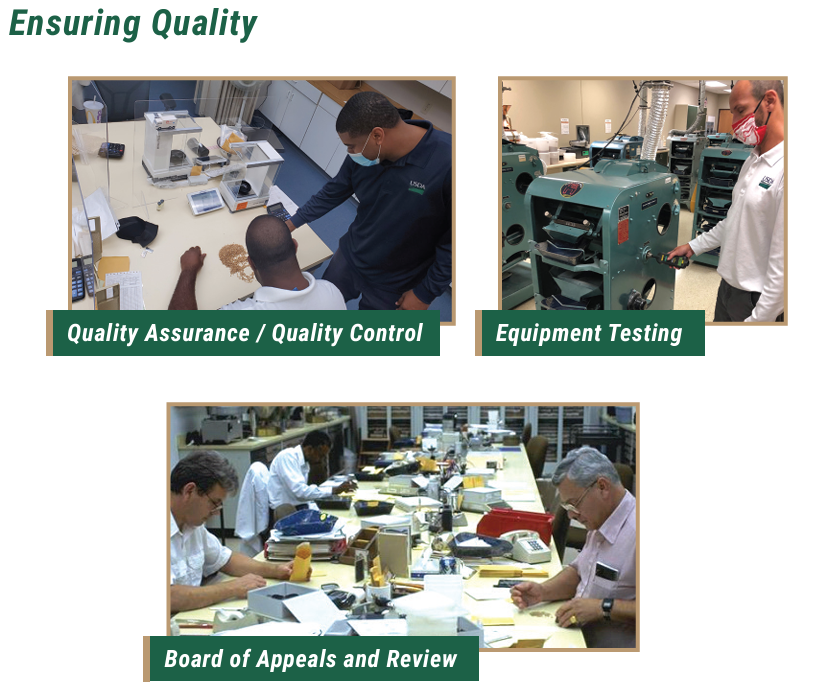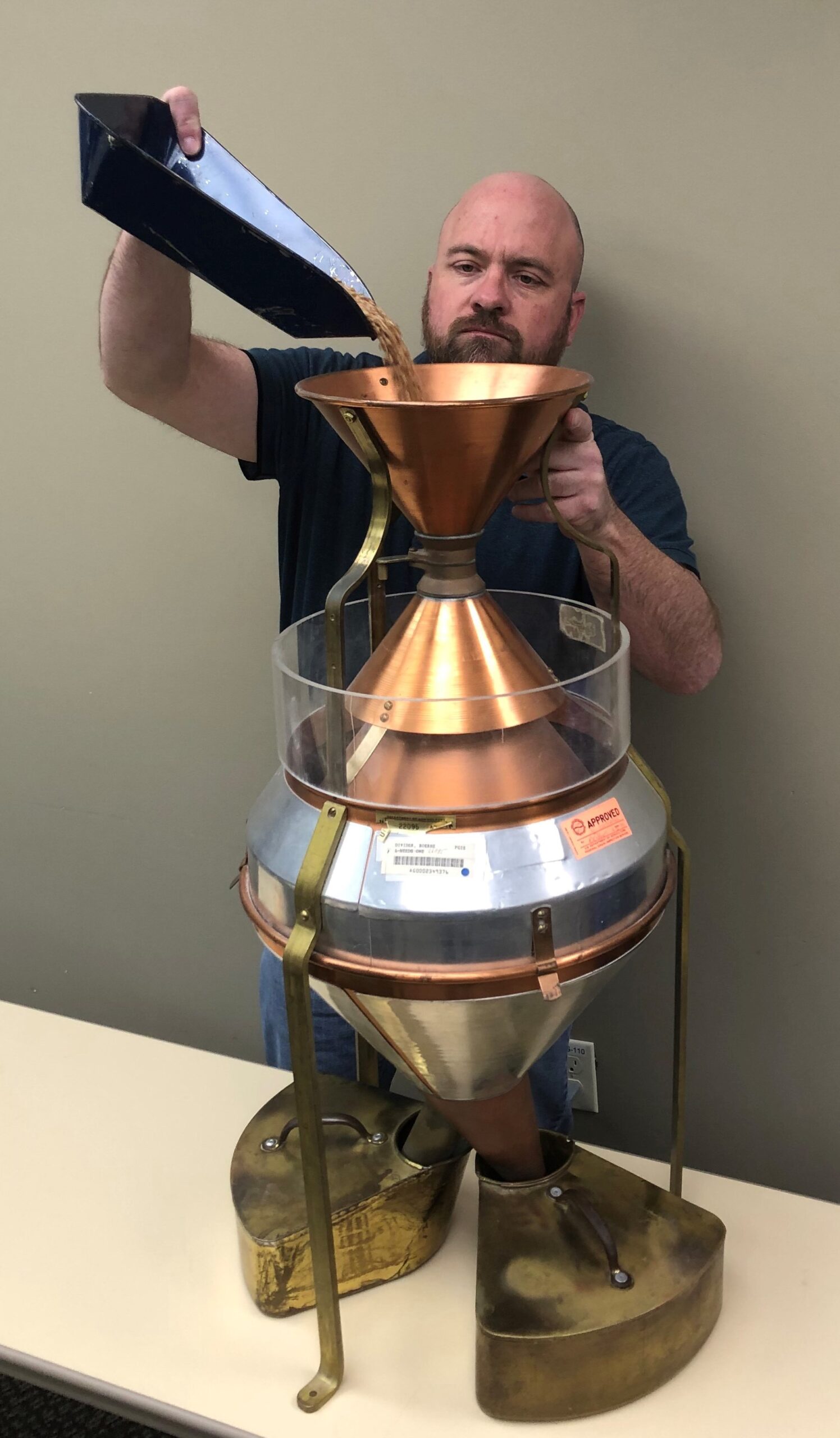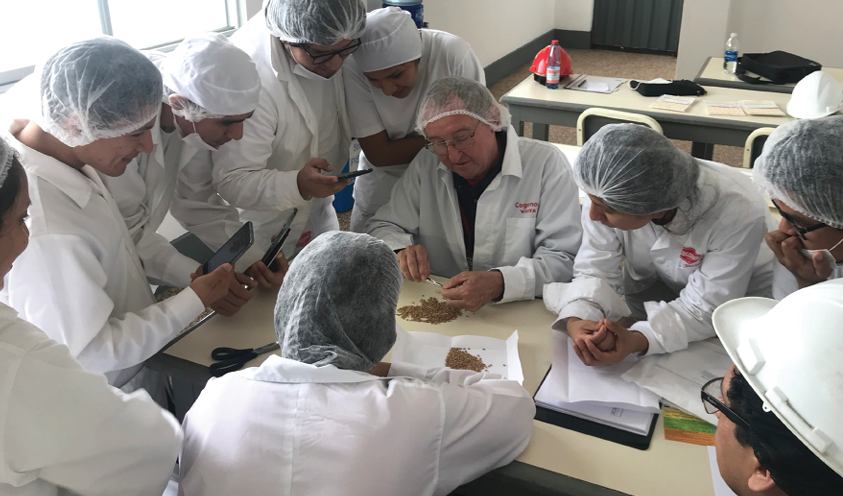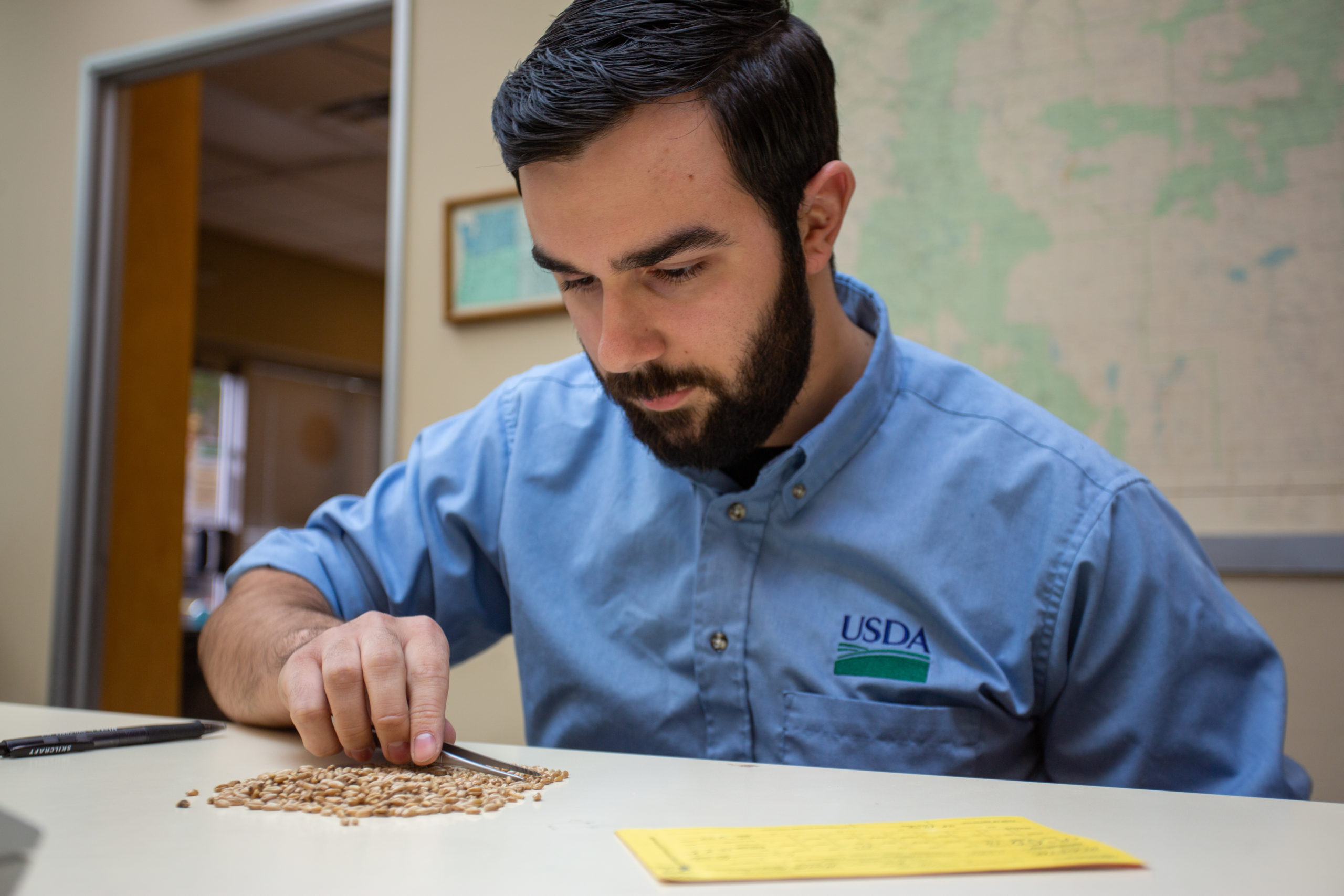The U.S. farm families who produce the wheat and the industry that supplies it are committed to keeping and open and transparent market. There are many reasons why our overseas customers know they can depend on our supply chain’s integrity, the quality of U.S. wheat and our unmatched reliability as a supplier. A crucial example is the third party wheat inspection procedures that yield valuable data customers can use, with help from U.S. Wheat Associates (USW), to get even more value from their purchases.
USW has partnered with USDA’s Federal Grain Inspection Service (FGIS) and Foreign Agricultural Service (FAS) to produce an “Overview of U.S. Wheat Inspection.” This publication compiles official sampling, weighing, inspection, and certification procedures employed by FGIS, or FGIS-authorized state and private agencies, for U.S. wheat export shipments. The “Overview” provides a convenient, concise reference for U.S. wheat importers and end users about U.S. wheat standards, inspection methods, procedures, and resulting data about their purchases.
Federally Mandated Wheat Inspection
Based on two congressional acts establishing a standardized process, trained and certified officials inspect and grade all wheat exported from the United States as it is loaded onto an export vessel, whether it be a train or ship. This independent wheat inspection procedure sets the United States apart by providing a form of certainty and protection for global wheat buyers.
The supply chain follows federally regulated and uniform grain segregation and inspection procedures. U.S. country elevators and export elevators inspect and test wheat as it arrives and segregates by class and quality to meet customer requirements. FGIS independently inspects wheat at vessel loading to certify that the quality loaded matches the customer’s specifications. No wheat is loaded onto a vessel until inspection is completed.

Five Inspection Operations

The “Overview of U.S. Wheat Inspection” describes the five basic operations performed at export before and during vessel loading: stowage examination; weighing; sampling; inspection; and certification.
Official weighing is mandatory for all grain exported from the United States by sea. FGIS integrates weighing systems into export elevator systems and supervises the entire weighing process. Results are documented and reviewed to certify the true weight of the cargo.
When a bulk vessel arrives at a U.S. export elevator, federal inspectors examine the ship’s holds for potential defects to ensure the vessel is substantially clean, dry, and ready to receive wheat and issue an official stowage examination certificate for the buyer.
By means of a standardized “diverter” mechanical device, FGIS inspectors in an onsite laboratory receive a consistent sample volume of wheat entering the elevator’s shipping bins, which is held until inspections are complete. After passing preliminary tests, the FGIS sample is divided into a “work” sample used to determine all grading factors and to inspect and certify other quality factors specified in the sales contract, and a “file” sample that FGIS keeps sealed for 90 days after wheat inspection.
Each sublot of grain must meet, within specified tolerances, the official grade and factors the buyer requests in their contract. Sublots that do not meet tolerances are not loaded into the vessel and are returned to the elevator. An inspection log is recorded for each sublot, providing a complete record of all inspection information that the buyer may request. Local USW representatives can help buyers adjust their future contract specifications based on this inspection data to ensure they receive the quality they need at the best price. The “Overview of U.S. Wheat Inspections” booklet online includes examples of all official certifications and logs the federally regulated U.S. grain inspection procedures generate.
USW Customer Support
USW strongly supports the unique U.S. grain inspection system as a competitive advantage to the world’s wheat buyers and makes an effort to demonstrate the integrity of the U.S. wheat supply chain in cooperation with the FGIS international affairs office. In addition to publishing the “Overview of U.S. Wheat Inspection,” USW and FGIS have conducted many inspection workshops for overseas buyers.
USW believes this wheat inspection training for importing customers gives them a deeper understanding of and increased trust in the FGIS inspection and certification process. The changes implemented in the mills following the training sessions should result in fewer discrepancies between the FGIS grade and the results of local, in-plant inspections, leading to increased satisfaction with U.S. wheat.

Here are online resources for additional information:
USW Dependable People, Reliable Wheat Fact Sheet
Official Grain Inspection & Weighing System
USDA Grain Inspectors Work to Uphold America’s Reputation for Quality, Support New Markets
ATP Funds, FGIS To Help Train Importers to Recognize Wheat Grade Factors


